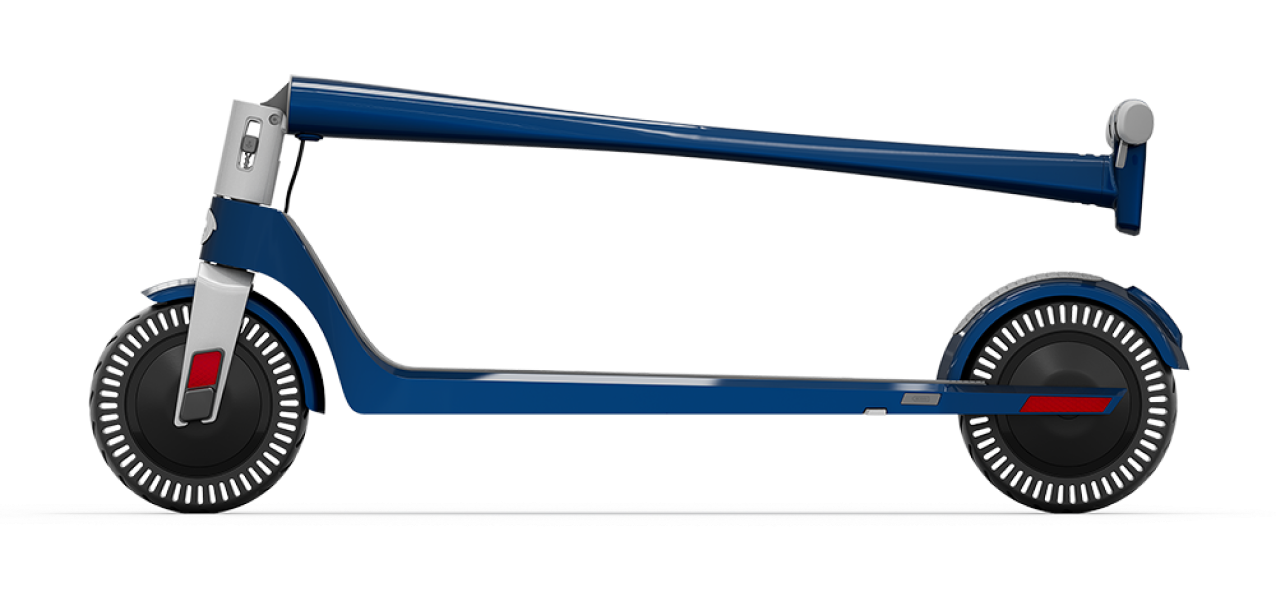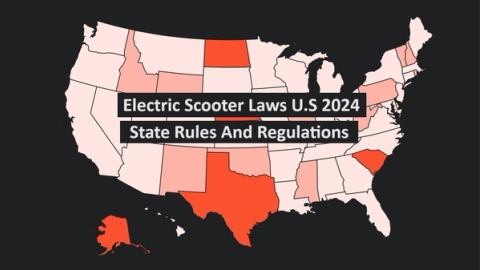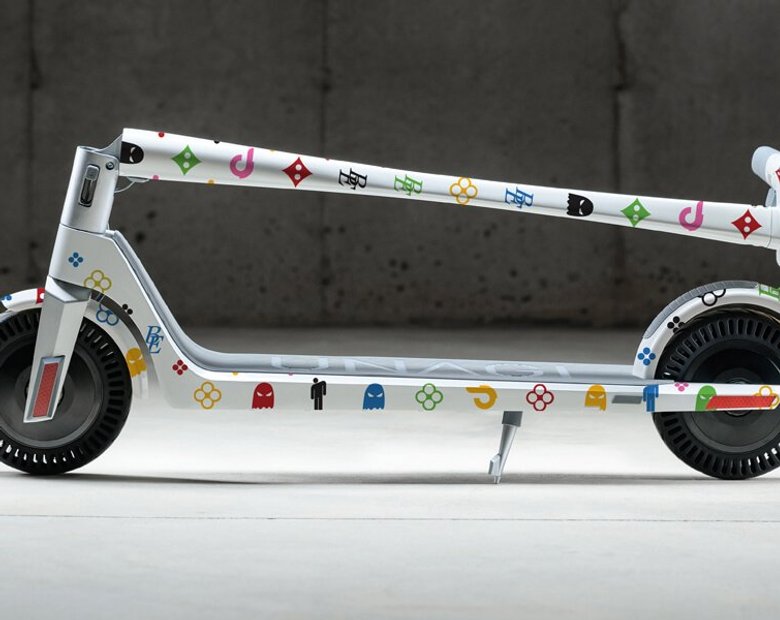With White Glove Love, we go where you go. All-Access members who are traveling can get an Unagi electric scooter for use during their trip, delivered to their hotel or Airbnb, at no extra charge. Now available in 8 U.S. cities.
If you're thinking about buying an e-scooter or already have one, carrying out regular preventative maintenance can identify minor faults and stop them from becoming costly repairs.
In this guide, we'll explore why preventative maintenance is essential for electric scooters and reveal some top tips on how to make it easy.
Electric scooters: The hassle-free transportation solution
In 2017, Santa Monica trialed the first shared e-scooter service, and it quickly became popular for city riders. Today, people have the choice of buying their own scooters, which offer more convenience and security.
According to research from Statzon, the global e-scooter market is growing at a 25% CAGR (compound annual growth), and it will have an expected worth of $389 billion by 2030. But what's causing the surge?
Well, electric bikes are popular, but scooters win when it comes to convenience. Let's explore why.
Simplicity
With fewer components than e-bikes, electric scooters are a grab-and-go solution that requires less configuration. You don't need to worry about learning the different gears or dealing with a complex setup.
Accessibility
Most electric scooter parts are modular, making them easier to maintain and replace. However, electric bikes have features that are built in, which means they're more challenging to find, and you might require a specialist.
Portability
Electric bikes can be bulky, which means you'll have issues when navigating them through traffic. E-scooters are highly portable, ensuring you can get around quickly and have no problems with parking them.
Preventative maintenance versus corrective maintenance
OK, e-scooters require some maintenance, but most people agree it's nothing compared to bikes. Preventative maintenance is the best course of action because it can save you money on repairs.
Let's take a look at why preventative maintenance is better than corrective.
Diagnosing issues
When you're able to identify issues with your scooter, it's much easier to fix them before they turn into significant problems. Corrective maintenance involves fixing a particular component of the scooter, but - as the saying goes - prevention is always better than the cure.
Also, it allows you to identify any safety hazards that might not be evident with a quick look.
Longevity
Just like car services give your vehicle more longevity, regular maintenance ensures you look after the scooter properly and notice any faults that might impact its lifespan. With proper care, your chosen scooter can last years.
Saving money
While there might be a need for corrective repairs at some point, many people leave minor issues until they become worse, which results in more expensive repairs. Regularly maintaining your scooter and checking for faults can save a lot of money in the long run.
Top tips for preventative maintenance
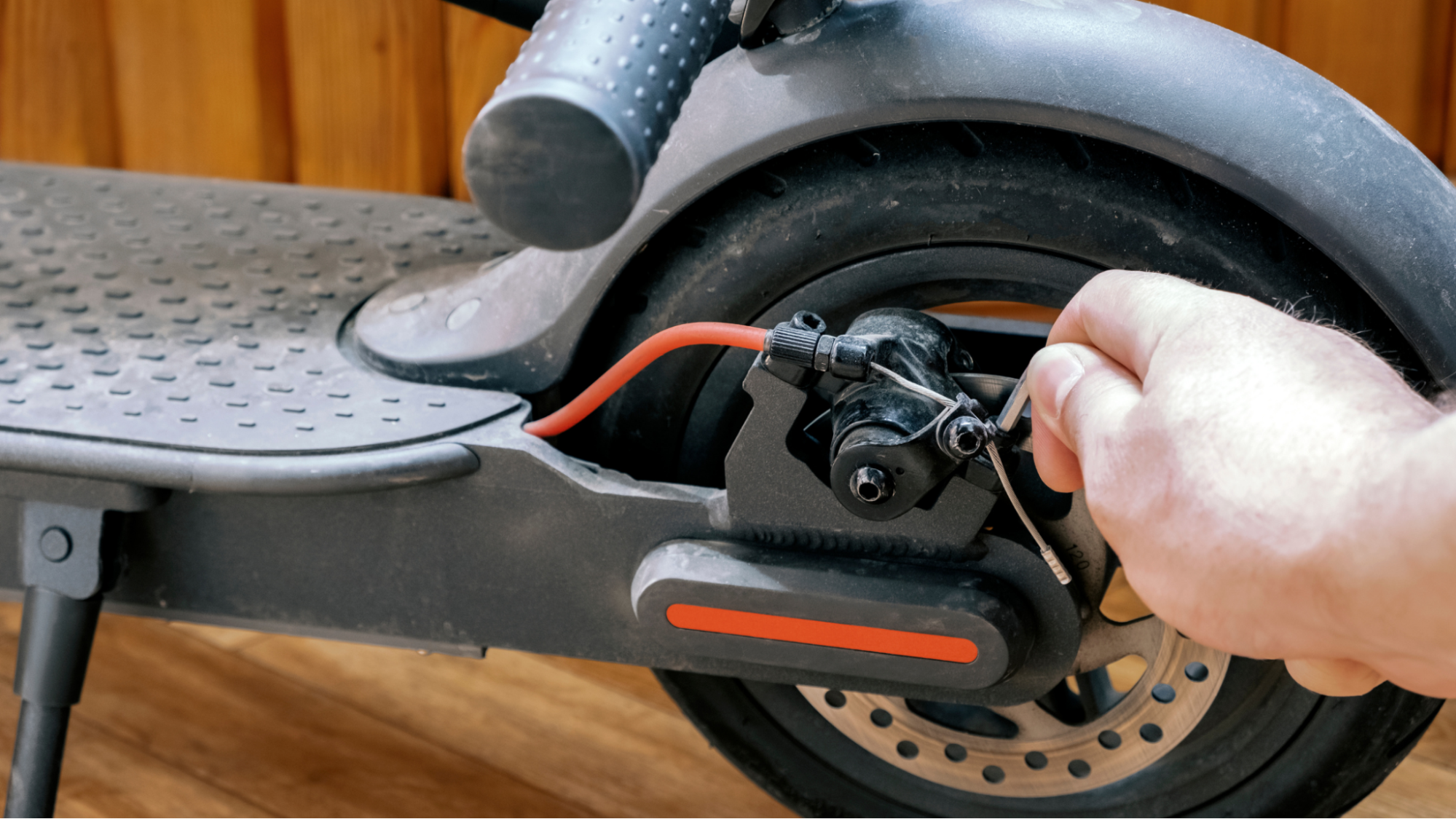
So, now you know that preventative maintenance can save you a lot of time and money, it's time to reveal our top tips for getting the most out of your scooter. Focusing on daily, monthly, and ongoing maintenance might seem like extra work, but repairs can cost a fortune.
Here's what you need to know about preventative maintenance.
Clean your scooter often
Every time you ride your scooter, you expose it to various elements, including water, debris, and general dust. While scooters are built to handle general usage, exposure can damage their components over time, but cleaning can prolong their life.
After each ride, grab a damp cloth and carefully wipe your scooter down, then dry it with paper towels or another cloth. It takes a few minutes and can ensure optimal performance at all times.
Monthly cleaning
Giving your scooter a thorough monthly clean can remove all dirt and debris, as well as enhance its aesthetic appeal. Here's the step-by-step cleaning process:
- Cover the charging port and other exposed electrical parts with waterproof material to ensure you won't damage them during the cleaning process.
- Wash the scooter with water first, focusing on areas with dirt and debris. Then, use mild dish soap or a specialist scooter cleaning solution mixed with warm water.
- Carefully wash the frame, wheels, and other components, rinsing them with clean water.
- Use an old toothbrush for stubborn stains, rubbing gently in a circular motion.
- Rinse the scooter with clean water and dry it immediately. Microfiber towels are ideal because they absorb moisture and won't damage the scooter.
Remember, regularly wiping your scooter down and giving it a monthly clean will ensure it performs well and helps you identify any issues.
Brake and tire checks
The brakes and tires are integral to your scooter's function, and any faults could result in serious accidents. Pneumatic tires can be beneficial if you ride on rugged terrain regularly, but they're also prone to punctures, making them ineffective over potholes.
Checking your tire pressure before each ride enables you to fix any issues and ensure your tires remain at their optimal levels.
Nobody wants to deal with faulty brakes while riding because they can be a considerable safety hazard. Check your brake pads before setting out, and listen for any unusual noises, as they're both signs that something's wrong.
Riding on faulty brakes can cause severe accidents and put other road users at risk. According to research from the National Highway Traffic Safety Administration, just over 20% of accidents occur due to faulty brakes.
While these figures are representative of commercial vehicles, e-scooters are still reliant on their brakes, and any faults can increase your risk of a severe accident.
Charge the scooter properly
One major fault we often see with electric scooters is when they're overcharged. It might seem like a good idea, but your owner's manual will detail how and when you should charge the scooter.
Common risks of overcharging include:
Reduced Battery Life
Constant overcharging will inevitably lead to a shorter lifespan, so you might need to replace the scooter sooner.
Combustion
Lithium batteries can be dangerous when overcharged, with the heat potentially causing fires. In 2022 alone, New York experienced 216 battery fires from e-bikes and scooters (Statista). However, proper maintenance could lower these risks.
Swelling
Swelling is a common issue that results from overcharged batteries, and it can harm the scooter's components. When this happens, they're also at risk of damage, which can result in expensive repairs.
How to avoid overcharging:
- Always check your scooter's manual and follow the instructions.
- Never leave your scooter on charge overnight.
- Invest in a spare charger to carry in your bag and charge on the go instead of risking overcharging.
- Unplug the scooter as soon as it reaches full capacity.
Lubricate the scooter's moving parts
Lubrication ensures the scooter's moving parts continue to function correctly, and it's a vital component of preventative maintenance. Failing to lubricate the parts properly can mean they become stiffer over time, which results in wear and tear.
It's best to clean the scooter first, then follow these steps:
- Check areas needing lubrication, including folding joints, visible cables, belts, and suspension systems.
- Choose a suitable lubricant that's compatible with the scooter. There are plenty of options out there, and some are specifically designed for scooters.
- Apply lubricant to all necessary parts, being careful not to use too much.
- Use a cloth to wipe off excess lubricant, which ensures the scooter doesn't accumulate dirt and debris.
- Assess whether the parts are moving correctly, then you can use the scooter.
How often should you lubricate your electric scooter?
If you use your e-scooter every day, it's best to lubricate the parts once a month. However, infrequent usage means the scooter won't wear as quickly, so once every two to three months is fine.
Check bolts, cables, and fasteners
Checking your scooter's cables, fasteners, and bolts is integral to a safe ride, as even a minor issue can cause serious accidents. For example, a loose bolt might not seem like a problem, but it might impact your ability to steer the scooter effectively.
Cables and fasteners can also cause safety hazards for your scooter, as they can affect the braking mechanisms and increase the risk of breakdowns.
If you notice any issues, it's best to fix them immediately. You can take the scooter to a specialist or repair them yourself if you're confident.
Routine inspections can prolong your scooter's lifespan

Routine inspections don't need to be a headache, and they can quickly become part of your general routine. Prevention is better than corrective maintenance, as it helps identify potential hazards before they become expensive repairs.
Following a set maintenance schedule enables you to check for issues but still enjoy the convenience scooters offer:
Daily checks
Before each ride, look at your scooter for any immediate signs of damage. If you have pneumatic tires, check the pressure and also use the brakes before setting off. You should be able to notice any loose bolts or cables by looking at the scooter, too.
Monthly maintenance
You don't need to do a huge amount of maintenance work each month. Giving the scooter a more in-depth look and checking all parts will flag any issues. As mentioned previously, lubricating once a month is also advisable if you use the scooter regularly.
Six monthly checks
Bi-annual maintenance gives you an idea of whether there are any deeper issues with the scooter's components and braking system. Some people prefer to go to a specialist, but you might feel comfortable handling it alone.
Annual services
Proactive car owners take their vehicles to a specialist each year for a service, and it's a good idea to do the same with your scooter. Professionals know how to spot issues that might not be noticeable to you, and it ensures you make timely repairs.
If you want to save money on yearly maintenance, getting a scooter as part of an All-Access Subscription gives you access to free services.
Preventative maintenance protects your warranty

Most e-scooters come with a manufacturer warranty, but this doesn't always mean you'll receive a replacement or free repairs. If the manufacturer feels you haven't taken care of the scooter properly, they might refuse to replace it.
Be sure to check the terms and conditions before making any alterations to your scooter, and make a claim quickly if anything goes wrong.
Being able to prove that you've taken the scooter for annual services and haven't made any modifications is key to either receiving a refund or getting a new scooter.
The bottom line
E-scooters - like any form of transportation - require regular maintenance, but frequent checks can help you avoid any issues and enjoy everything scooter ownership comes with. However, you can also prevent spending ages on care by:
- Buying a commuter scooter with solid tires, as they don't require any maintenance and are fine for urban environments.
- Purchasing a spare charger to ensure you don't overcharge at night.
- Washing your scooter regularly and giving it a quick look.
- Taking the scooter for an annual service.
- Repairing minor issues before they turn into major ones.
With these steps and a proactive attitude, you can enjoy everything electric scooters have to offer without worrying about the expense of costly repairs.

Read more.

Read more.

Read more.

Read more.

Read more.

Read more.

Read more.

Read more.

Read more.

“Is my scooter legal?” is a question many are increasingly asking. The micromobility industry is one of the fastest-growing and most exciting in the world—with promises for...in addition to abundances of the basics of time and money savings. And with this pace of innovation comes a struggle for regulation to keep up.

So, you're thinking about joining the electric scooter revolution, huh? You've seen those sleek and stylish scooters zipping around town, effortlessly gliding through traffic, and you can't help but wonder: Are electric scooters easy to ride?

In this guide, we'll break down what defines a lightweight electric scooter, why you should choose one, and the top features you should look for.

Want to get the most out of your electric scooter battery and extend your riding adventures? We've got you covered with our comprehensive guide full of maintenance tips and best practices.

*Disclaimer: Unagi, INC. has used best efforts, but does not in any manner guarantee the accuracy of the below findings regarding electric scooter laws in the United States or internationally. Electric scooter riders or those considering to purchase or begin…

It’s beyond question that we must drastically reduce carbon emissions in the coming years to head off the worst effects of climate change. How we do that has been a matter of considerably drawn-out debate. As individuals, it can be…

If you're considering riding an electric scooter for the daily urban commute - or even just for recreation - this article will give you the lowdown on getting insurance for an electric scooter.

In many regions, there's a clear restriction against riding electric scooters on the road, with the rules steering their use towards designated areas such as bicycle lanes, multi-use paths, and shared street paths.
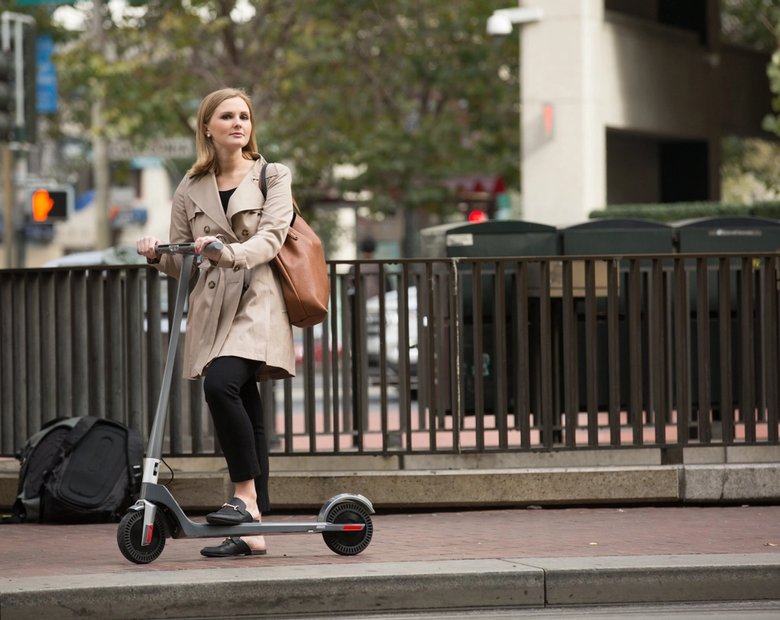
You’ve seen them all over your city’s streets, and everyone who rides one looks absolutely thrilled. So, why haven’t you picked up your own folding electric scooter yet? Maybe you’re worried about whether e-scooters require a driver’s license, or a…

The basis and the premise of my work is that we either operate out of love or we operate out of fear...Time is currency. The coolest thing about the scooters is that it's really quick, and it goes uphill. From there, traveling more efficiently and having a good time doing it--I think that's the most important thing.

Cynthia Leu has a full plate. A tech worker by day, Cynthia spends her off time balancing the parallel lives of a powerlifter, entrepreneur, mental health advocate, and more. Riding Unagi helps this USMC veteran cut down on everyday…

https://www.youtube.com/watch?v=7m2hVBE62LY Rasheed Muhammad is sick of Los Angeles traffic. In order to preserve his sanity, Rasheed has traded his everyday driving habit for the portable and beautiful Unagi Model One. It’s an essential accessory for navigating LA streets -- and…

Rich Lee, Co-Founder of San Francisco’s SPRO Coffee Lab, wants to share his love for coffee with the world. He depends on riding Unagi to avoid the hassle of navigating the parking crunch in the booming Mission Bay neighborhood.…


